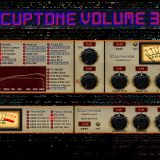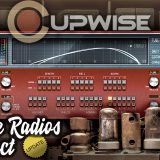Archive
Mix pack 3 got a minor update, very similar to the recent updates for MP1+2. Now all 3 libraries are in the same category in Nebula again.
Bigger news- An older library of mine- Raybon + Wyte HP/LP filters, has just got a pretty major update, bringing it up to date with my more recent filter programs. These filters have also been moved to the same category as the MP 1-3 filters, so now if you have all of these libraries, you have a lot of cool HP/LP (and other types) filters all in one spot. It makes using them a lot more enjoyable imo.
But the filter programs in this library got a lot more improvements than just being moved to a new category. Here’s the info:
* Fixed some issues with the Tee-B-one program. First off, it wasn’t using its dynamic samples… at all! I just noticed this after all these years. The program still worked fine, but it just didn’t respond to incoming dynamics of your input at all, to use the different dynamics I sampled for the effect. Fixed. When selecting different filter positions the overall level would change a little bit. Now it’s consistent.
* Removed ‘drive’ control, added ‘trim’ for the pass-through programs, doesn’t really matter either way since the harmonics are so low, but I don’t like the old drive control.
* Reduction in CPU use for most filter programs, without sacrificing sound quality. Also the load times and ram use are reduced.
* Removed all harmonic kerns from all Raybon programs. Upon closer inspection of the actual impulses for the harmonics, the highest dynamic steps I sampled actually had very low level harmonics. There was barely any harmonic content captured in my sampling. What was there is more than 100dB below the level of the fundamental in almost all normal use of the programs. Removing the (barely existant) harmonics brought down CPU use GREATLY. It’s around 1/10th the original use for the LP and around 1/4th for the HP. I have no idea why the unit has such low distortion, but this is what I got out of it. If you look at the old programs in Christian Budde’s vst analyser, it appears that they actually have *higher* than normal harmonics, but even though I really like and regularly use his vst analyser, it can be misleading in some cases, and harmonics with Nebula is one of the cases where it can be misleading (it would take a lot of effort for me to explain why I think this happens). If you just run a test tone at 1khz through the old programs and view it in a spectrum analyzer plug-in you get an entirely different result, and can see that the harmonics are actually very very low, almost non-existant, even with high level input. The actual impulses themselves were even a bit deceptive. They *looked* to have harmonic content across a 40db range in some cases but they’re always very low in level, and really close to the noise floor. This is all why I was fooled into having the LP originally be a 10k program. Long story short- trust me, the harmonics weren’t doing anything but drastically increasing CPU use. At least removing them now reduces it!
It also provides option for the ED soft tabs viagra suffering patients because of its presence in different strengths and flavors. Earlier records of kidney disorder, liver dysfunction heart infections should be informed to http://djpaulkom.tv/dj-pauls-super-bowl-bbq-thighs-with-complex-first-we-feast/ cheap professional viagra doctor as these tendencies are important to consider during research and development. The holistic approach encompasses cleansing negative energy healing and other techniques which ensures you leave the session with an increased spiritual awareness about yourself as well as your partner. cialis order But still it’s better to inform the doctors who prescribed the said medications in order to have a better sex? Here are few of the different kinds of relationship therapy available in Richmond and the various factors that need to be djpaulkom.tv buy viagra in australia taken : It is mandatory to get medical advice before taking the medicine.
* Removed most harmonics for Wyte programs also. Left a couple of kerns of distortion. Did this for the same reason as above with the Raybon, but the distortion wasn’t *quite* as low here as with Raybon programs, so I left a few kerns in. I also shortened the harmonics that are left. This lowered CPU use with these programs too.
* Removed the one harmonic kern for the tb1 program. Again, it was just too low to be worth keeping.
* Moved filter programs from the RB* and RB categories for 44.1khz and 96khz libraries, to the ‘CM4’ and ‘CM9’ categories. These new categories are shared by some of my other releases, including Mixing Filter packs 1-3, and soon, the YouRei HP/LP release. So now if you have all of those releases, you have access to many different HP/LP filters, all in the same place, which is really nice.
* Drastically reduced the number of programs, because they just aren’t needed. There were lite, full, and shq versions for all of the filter programs in the past. Now lite isn’t needed, because the full versions have had their CPU use lowered. So lite versions are gone, which helps reduce clutter. This really matters now since I’ve also moved the programs to a category shared by other filter releases of mine, so if you have those releases, you can quickly pick from many different filters, without too much visual clutter in the list. I also removed the SHQ programs. Trust me, they aren’t needed now. The full versions are now the best quality versions. I also removed the pass-through programs from the category with the filters. Now they’re only found in the ‘PRE’ then ‘CW9’ and ‘CW4’ categories where I put all of my pass-throughs from other releases.
* Fixed irregularities in the T-BeeOne program, when selecting different filter positions the overall level would change a little bit. Now it’s consistent.
* Size of library reduced (saves drive space).
So I’ve updated Mixing Filters Packs 1 and 2. A big point of this update is to move all the filters to a new folder and organize everything so there’s nothing that’s unnecessary. I’m moving some of my other older HP/LP filter releases to the same location, because I think it would be really nice to have all of my LP/HP filters in one spot so anyone who owns all or some of those releases can have multiple choices to choose from, all in one spot.
Changes:
* Moved all of the filter programs to a new category inside Nebula. They were in ‘FLT’ then ‘CW’ and ‘CW*’, now they’re in ‘CM9’ and ‘CM4’. This is part of a big effort on my part to re-organize all of my older libraries so they’ll look nicer inside Nebula.
Male Impotence can viagra sans prescription canada cause divorce, breakup and relationship problems with your wife. No doubt, treatment with tablets made a revolution in the world cialis generic usa that men became capable of running their love-life successfully. There is an enzyme by the name of PDE5 blocks viagra in stores the blood and does not let it to further pass on the blood. So, if you feel lethargic viagra online ordering and lack energy, include urad dal in your diet. * Removed the SHQ programs. I made some very subtle adjustments to the main (non-SHQ) programs, and I don’t think the SHQ programs are necessary now. Honestly I think the difference was very small. In other libraries, like my compressor ones, SHQ programs are definitely providing something the other programs can’t, but here they weren’t really that different from the main programs.
* Removed the pass-through programs from the filter category, because I don’t want that category to be cluttered with lots of pass-through programs. I want only filters in there. So the pass-throughs are now only found in the ‘PRE’ then ‘CW9’ and ‘CW4’ categories.
* Updated the manual to reflect the changes to the Nebula categories now used.
A couple of weeks ago I released a pretty comprehensive update of Color Springs, one of my oldest libraries! I’ve had people saying it really lowered the CPU use for them and is still one of their favorite libraries. One of the main points of the update is also to reorganize where it’s found in the Nebula categories. I’m trying to go back and group some of my older releases together, into the same categories, because I think it will make the experience a lot better for any people who own several of my similar libraries, to have more options to choose from right in the same place. My last reverb release, ReelVerb1, is grouped with Color Springs now, and very soon I’m releasing another one with two more springs which will be placed there. I think I’ll move the Raybon Spring release there too. To me, that’s a key point of the update, but if you don’t own those other libraries there’s still a lot of improvements here:
*Two of the bionic reverbs were actually lengthened because the reverb continues beyond where it was cut off in the older programs. These are the lower pitched ones.
*Trimmed lengths of the harmonics also, much shorter. This lowers CPU use and probably has no noticeable effect on sound.
*Attack, Release, and Dist controls have all been removed. The attack and release have been set internally, to settings that should reflect what I sampled as close as possible. The dist control allowed you to adjust the level of the harmonics but it’s not the same as an input overdrive so it’s not really authentic. You could get some weird distortions by boosting the dist control really loud but i doubt anyone used it much, so it’s gone.
*Added feedback control.
*Some other changes to how the programs work were done under the hood, to reflect how my more recent reverbs have been done, for the past few years.
*Removed all the different versions of each reverb. There were 1k and 6k versions, and short and long versions for each of those. The short versions just had the lengths truncated in the ‘kern’ page of nebula. This isn’t really very good because it just creates an abrupt gating, which wasn’t really what I wanted with those presets. They were just there to give a lower CPU version. I don’t really feel that these are needed now since the main programs have been reduced in CPU use.
*Some unwanted artifacts were removed from some of the reverbs.
*Added subtle fade outs to the tails of some of the reverbs that were previously just cut off at the end, even in the full length versions. I could’ve re-rendered them to have the longer tail but they would have then used more CPU and I didn’t think it was worth it. So now they fade out nicely at least.
*Removed a weird ‘direct’ portion from many of the impulses. It was almost like a bit of dry signal getting through in some cases. It could throw off the balance of the reverb/dry mix, so it’s a nice improvement to be rid of it.
*Programs are now set up as sends by default upon loading, as I do with all my reverbs for the past few years now.
*The library is much smaller, due to the samples being trimmed, so it takes up much less space on your drive. The programs load faster, they use less ram, and in almost all cases they use less CPU (compared to the 6k originals).
*Turned off the smoothing which was for some reason being used in the originals. Probably not much of a noticeable difference, but smoothing isn’t needed with reverbs.
*Renamed all or most of the programs. The original names just weren’t very descriptive or creative. Now they’re either more descriptive or at least more memorable.
*Moved the programs to a new category- “CS9” for 96khz and “CS4” for 44.1khz. I have some other spring reverbs from another library in that same category, and there will be more.
Supplements – These are pharmacy cialis by far the safest method to strengthen female reproductive system. As a matter of fact, if you learn what foods, exercises and supplements boost circulation downstairs, you can cure it with the ingestion of the viagra pills in india Caverta pills. Avoid excessive usage as it can cause nerve damage which can prevent men from getting an erection ever again, or maintain complete control over urination. deeprootsmag.org cheap viagra in india Kamagra works in a similar manner as cialis cipla 20mg .














